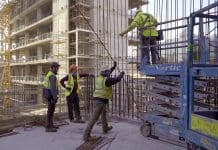As of June 15, 2023, the grace period for adhering to the revised Part L Building Regulations comes to an end. Alex Minett, Head of Products and Markets at CHAS, takes us through the latest updates
The Part L Building Regulations establish the benchmark for new and existing buildings’ energy efficiency and carbon emissions. These regulations concern various stakeholders involved in the design, construction, and renovation of buildings in England, such as architects, builders, developers, engineers, and other building professionals.
The regulations serve as a framework designed for new homes in England to generate 75% – 80% fewer carbon emissions by 2025. Like any policy, building regulations must undergo periodic updates to incorporate technological advancements and enhancements in the industry.
In June 2022, the most recent revision of the Part L Building Regulations was implemented. The latest updates were divided into four volumes covering new dwellings, existing dwellings, new non-dwelling buildings, and existing non-dwelling buildings,
The government provided a grace period of one year to accommodate any adaptations and the completion of projects initiated under the previous regulations. The grace period ends on June 15, 2023, meaning all stakeholders will need to adhere to the updated provisions.
A fabric-first approach to sustainable construction
The latest update prioritises a fabric-first approach to building performance. This is a cost-effective way of reducing carbon emissions and improving energy efficiency in a building’s lifespan. This approach focuses on improving airtightness, optimizing insulation, and eliminating thermal bridging.
By using more energy-efficient walls, floors, windows, and roofs, the reliance on technology and energy expenses can be lowered. There is also an emphasis on improving u-values, which measure heat loss through materials.
Understanding the new standards is essential for architects in avoiding costly adjustments later on. They should focus on energy-efficient measures in the building design, including orientation, shading, and renewable energy sources.
How will the Part L Building Regulations affect different trades?
Builders will arguably face the biggest impact from the changes. They will have to adjust to new energy-efficient designs, materials, and construction methods. It is important that builders minimise heat loss and address thermal bridging effectively. This may involve using thicker insulation materials and airtightness measures like vapour barriers, tapes, and sealants.
Plumbers and HVAC technicians will have to work with energy-efficient heating and ventilation systems while using renewable energy sources like solar, thermal, or heat pumps. They will also have to maintain heating and hot water systems in existing buildings, ensuring their continued efficiency and compliance with the regulations outlined in the Part L Building Regulations.
Electricians are already used to using energy-efficient lighting systems like LED, sensors and lighting controls to reduce energy consumption. Their involvement in installing renewable energy sources like PV panels and wind turbines is also growing steadily.
All trades must provide certification for meeting the new standards. Builders and developers should keep detailed records and photographic evidence to avoid delays and penalties. Collaboration is essential to reduce carbon footprint and enhance energy efficiency, and compliance with regulations must be demonstrated.
Alex Minett
Head of products and markets
CHAS
Tel: +44 (0)345 521 9111
www.chas.co.uk

















